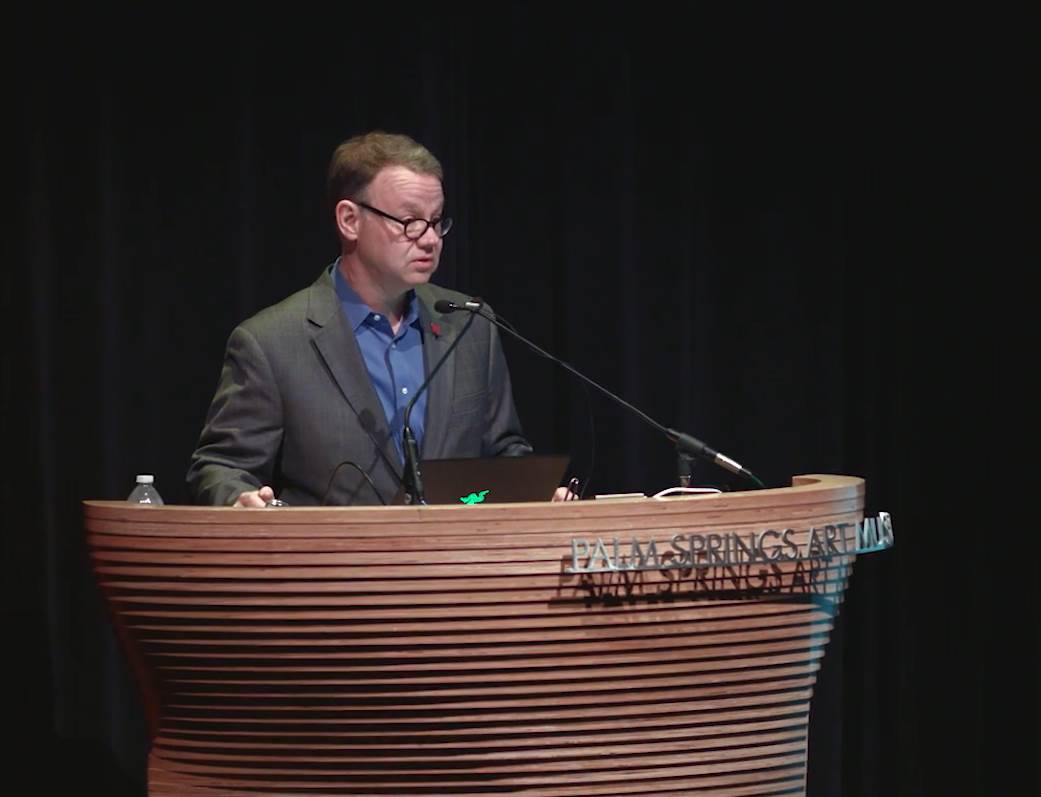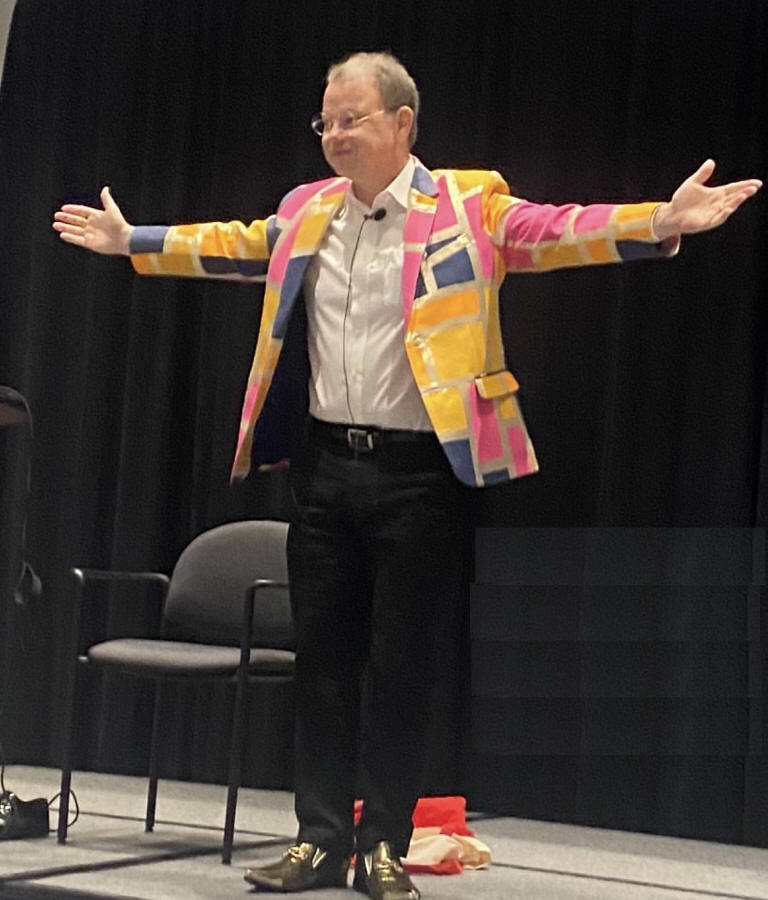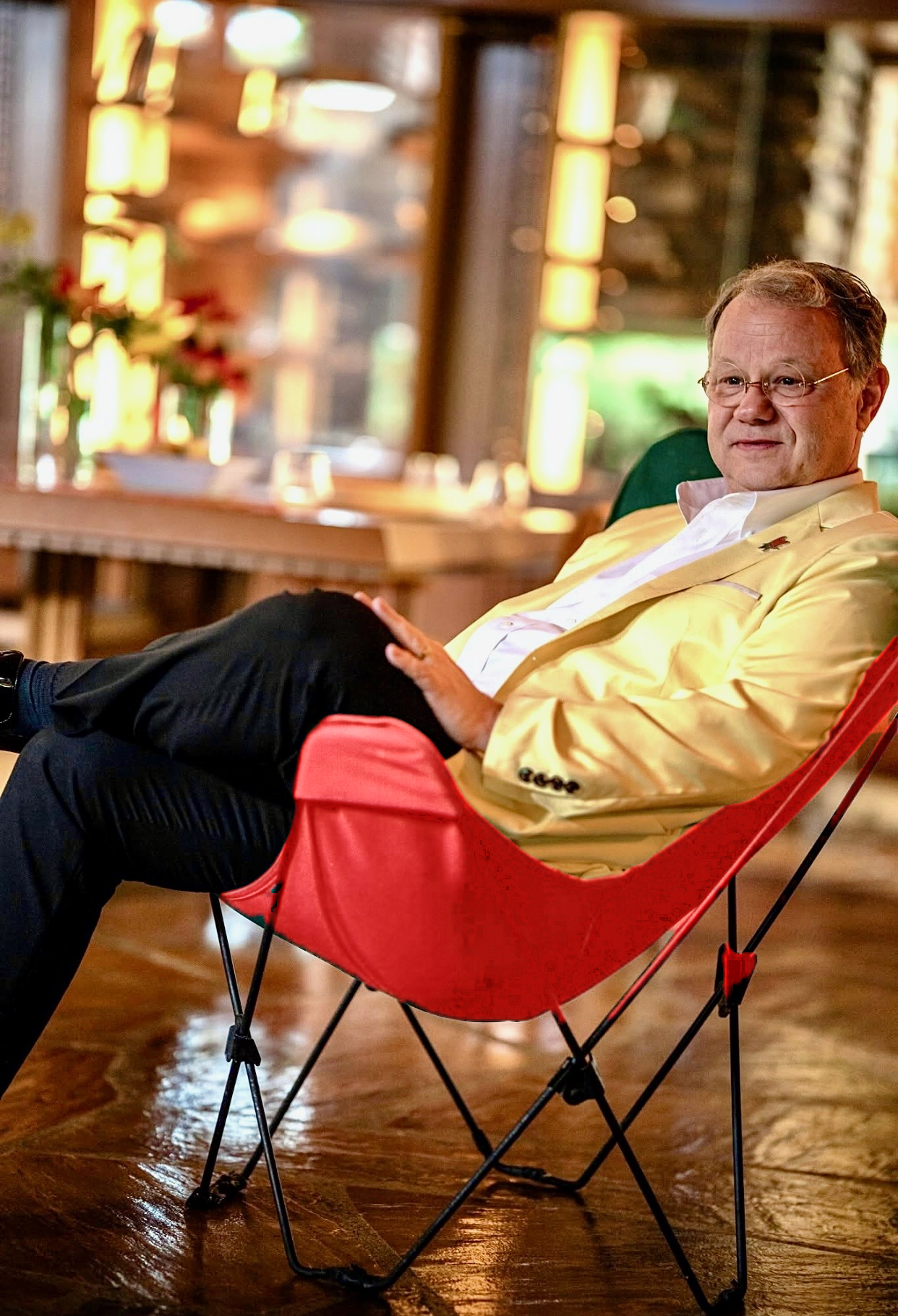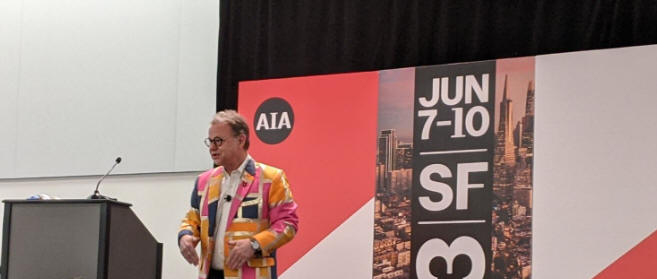




National Keynote - The Accidental Archivist: Preserving America's Legacy of Modernist Houses
North Carolina Keynote
- Mayberry Modernism: Preserving North Carolina's Legacy of Modernist Houses
To book, call 919.740.8407 or
george@usmodernist.org.
High-res photos: tux, jacket, Palm Springs, sweater.
George Smart HAIA is founder and CEO of USModernist®, the world's largest nonprofit educational archive dedicated to the documentation, preservation, and promotion of Modernist residential design. A passionate advocate for Modernism, George has been one of the nation's leaders in raising awareness to preserve this important architectural movement. He is a frequent speaker to architecture, design, preservation, real estate, and museum groups and is one of the few people to be bestowed an Honorary AIA by the national American Institute of Architects.
As host of
the long-running USModernist
Radio, named by DWELL as the #2
architecture and design podcast, George has led 430 episodes and interviewed
over 750 guests in architecture and design from around the world.
USModernist’s intrepid team of nonprofit staff and volunteers have
documented over 140 major 20th century architects, researched over 25,000
Modernist houses, and scanned over 5 million pages of architecture
magazines going back over 130 years. USModernist's work has helped to change
the way people think about preservation. George and USModernist have won 20
honors for leadership in preservation, including national AIA Institute
Honors for Collaborative and Professional Achievement.
George has spoken to: AIA National Conference 2023 2022 2016 * DOCOMOMO/PRP 2025 * California Preservation Foundation * AIA Knoxville / North Carolina / Charlotte / Eastern / Piedmont / Asheville / South Atlantic Regional * Paul Rudolph Institute for Modern Architecture * Modernism Week 2023 2018 2014 * WestEdge LA * NY School of Interior Design 2024 2023 2022 2018 2017 * Northeastern University * Wichita Century II * Columbia Design League * Modern Atlanta * National AIA Foundation * Charlotte History Museum * Modern Richmond * Rhode Island State Preservation Conference * NC State College of Design * Branch Museum * Gregg Museum * Preservation NC * ASLA North Carolina * National Trust for Historic Preservation.
 <
<

What is Modernism? Modernist design is characterized by features such as combining traditionally separate common areas (like the living room and the dining room, for example), open interior floor plans with vaulted ceilings, large and numerous windows, flat or low pitch roofs, long exposed beams, extensive use of glass to bring in natural light, and unusual geometric forms. Early Modernist architects wanted to change the way people lived by making houses and objects more affordable through better materials, streamlined building, and family connectivity. Gone were formal living and dining rooms - instead, there was a large family space where kitchen, dining, and living rooms flow into each other - and smaller private bedrooms. More than anything, Modernism creates feelings of optimism - a better, brighter future than the past.
About George's Talk: America's mid-century Modernist architects and their original clients are almost all dead; their houses have been sold several times; and the local real estate community would just as soon market teardowns as find new, caring owners. Despite many Modernist houses aging over the 50-year mark, city councils and preservation groups have a hard time considering Modernist houses to be historic - because 50 years later many still look like the future.
With bulldozers continuing to destroy mid-century Modernist houses (like Marcel Breuer’s Geller House in NY and Craig Ellwood's house in CA), these livable works of art continue to be threatened by rising land prices and disinterested heirs. Preservation is more important than ever, but you can’t save something if you don’t know where it is and why it is important. If you’re a Modernist fan in many towns and smaller cities, you may have asked: hasn't somebody documented the Modernist houses? Surely some architect or preservation society or library has a list? Likely, no.
George shares the story of how an energetic and dedicated team of volunteers documented thousands of Modernist houses across America. Audiences learn basic principles of Modernist design, why preservation important to our communities, and how easy it is to start a documentation and preservation effort of their own - with nothing more than a car, a cell phone, and a laptop. For anyone who loves good design, it’s an informative, fun conversation. George is also available for panels (as participant or moderator). He is @mr.modernism on Instagram.
Learning Objectives for Continuing Education
Participants learn how thousands of significant Modernist houses were documented and made available to the public online, most for the first time.
Participants identify the beginnings of residential Modernist design as part of a national movement.
Participants learn key differences between Modernist and contemporary architecture.
Participants learn the key architects and influencers in US Modernism.
Participants learn marketing methods to preserve and document mid-century Modernist houses.
Participants discover how documenting, preserving, and promoting residential Modernist design benefits the architecture and construction industries.
Participants learn key differences between selling a traditional house and selling a Modernist house.
Participants gain access to a digital archive of over 5 million pages of design magazines, plus 50,000 photos of over 25,000 Modernist houses.
Participants learn search tools and resources within the extensive USModernist website.